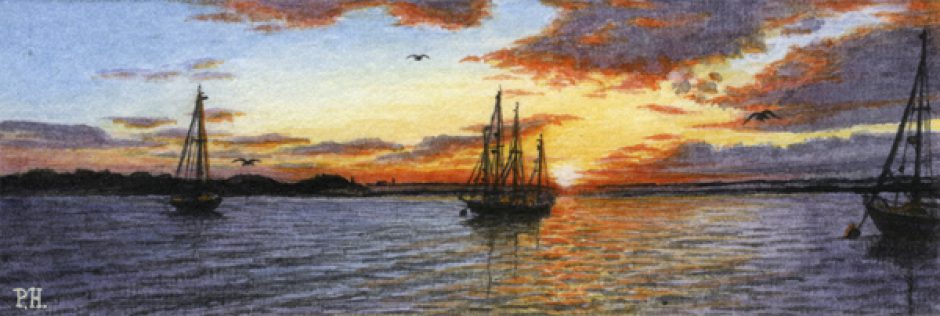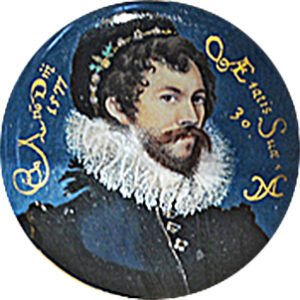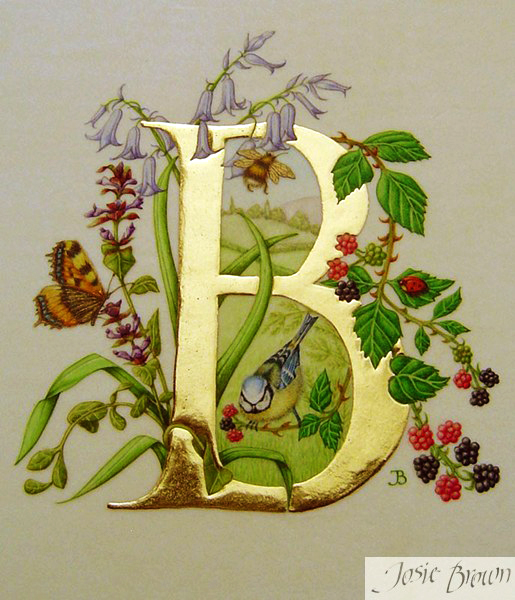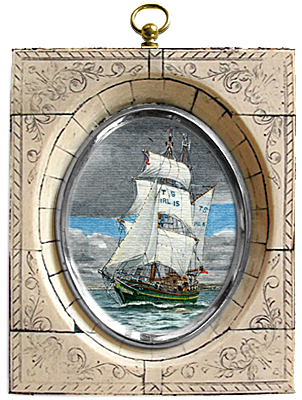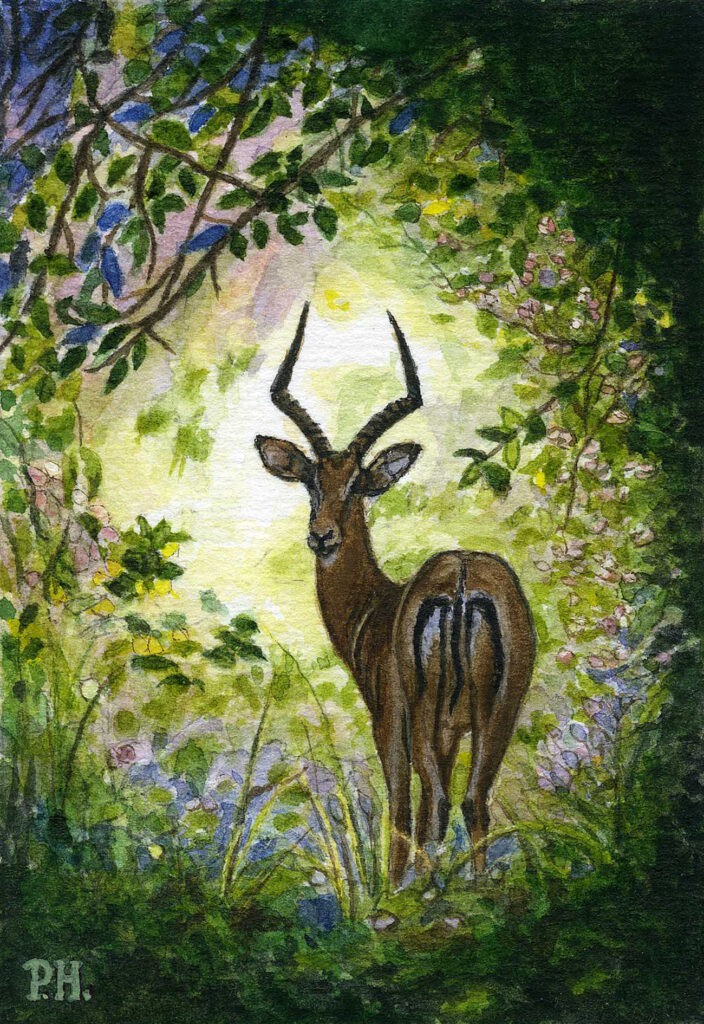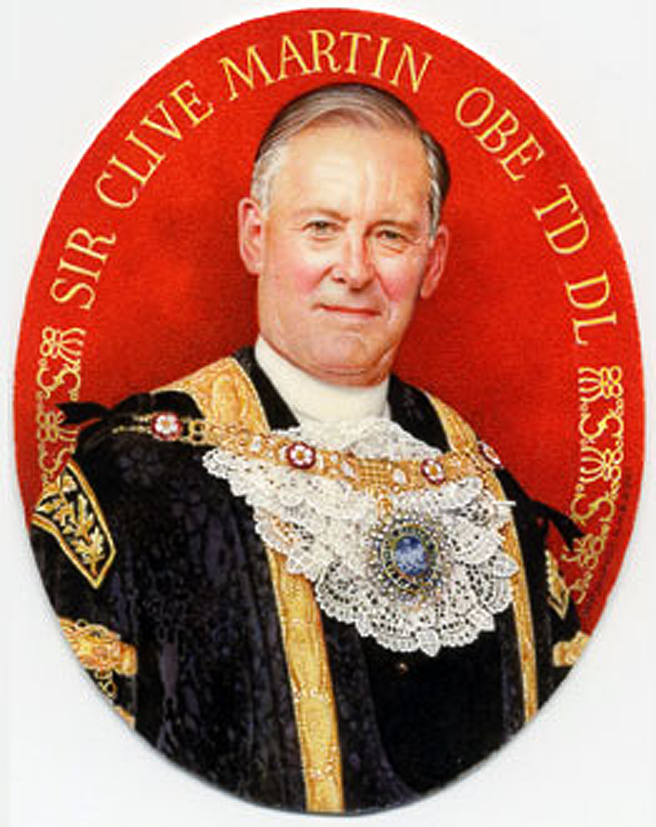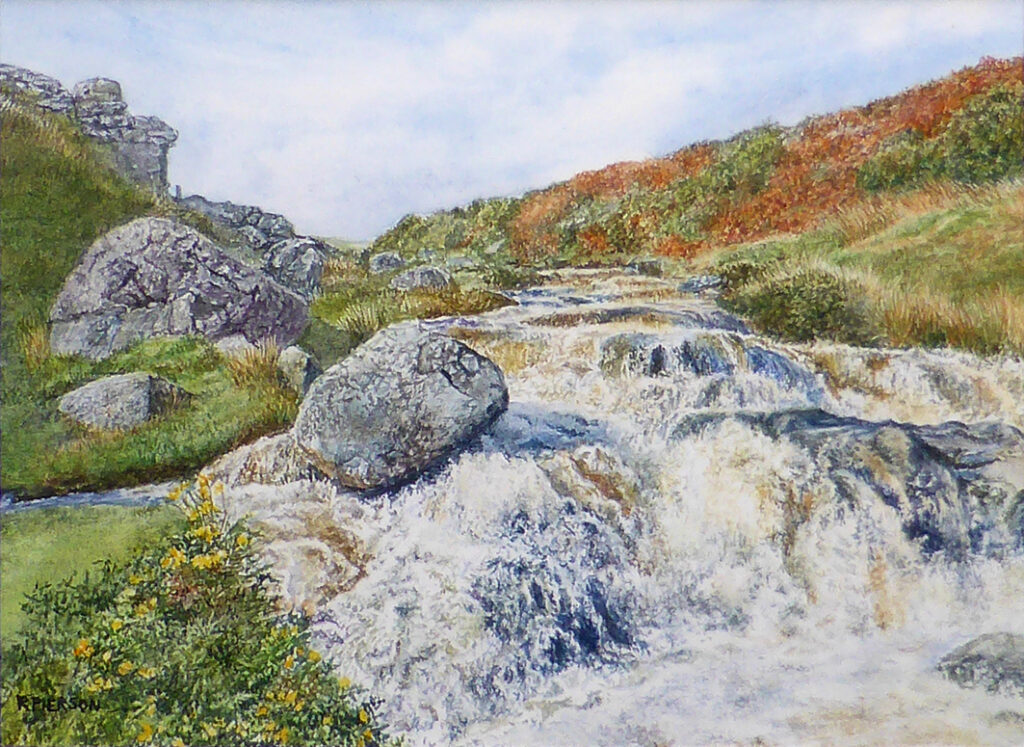Painting Miniatures
Limning – “A thing apart from all other painting or drawing” – Nicholas Hilliard (c. 1600)
The Art of Miniature Painting or Limning goes back to the 16th century when Hans Holbein succeeded Lucas Hornebolt at Henry VIII’s court as a painter of portraits. Hans Holbein painted both large and miniature portraits, mostly in oils, and is considered to be one of the earliest painters of miniatures in England. Nicholas Hilliard (1547-1619) was the first great British artist specializing in miniatures. He became the Royal Limner-Miniaturist to Queen Elizabeth I and most of his paintings rarely went above 2″ x 2″. His exquisite painting of delicate lace in his portraits, even under a magnifying glass, was faultless. Nicholas Hilliard was an absolute master of miniatures at the age of twenty-five and his style made no dramatic changes for more than half a century. His paintings included portraits of Queen Elizabeth I, King James I, Sir Francis Drake, Sir Walter Raleigh and Elizabeth, Queen of Bohemia. Nicholas Hilliard’s miniatures are permanently on show at the Victoria and Albert Museum in London.
In the 16th century miniature painting was a secret passed only from father to son or master to pupil. Nowadays there is no secret to miniature painting, and there are many artists willing to pass on their skills and techniques through books or classes. At this time, miniatures were mostly of portraits but now with the invention of the camera to take portraits, miniature paintings have expanded to almost every subject from landscape, seascape and portrait to flower, fruit and fauna studies and from animal, pets and wildlife, studies to contemporary and silhouette subjects. Another art that has come from the earliest times to the present day, and now produced in miniature form, is the art of calligraphy and illuminating. I have always marvelled at the skill and patience taken by the calligraphist when scribing a verse and painting an illumination on an area no bigger than one and a half inches square. In case you are wondering what illumination around a calligraphy work is, it is the beautiful painted work, perhaps of flowers or heraldry, or any such subject that might help to enhance the meaning and beauty of the scripted work and was in fact the beginning of miniature painting as a separate art form. Some miniatures are smaller than a postage stamp.
Miniature paintings, except for small subjects, should be no larger than one sixth of the original subject size, making a portrait no more than two inches in height. The largest a true miniature painting can be, including the frame and mount, is 7″x 5″, but some Miniature Societies ask for 4″x 6″. If they are any larger than this then they are classed as small paintings. In the 16th century miniature paintings were painted on vellum bonded to a playing card, but nowadays artists use a much wider range of materials to paint on, such as paper, ivorine (this replaced the ivory used from the 17th century) now ceased in production, Polymin, a synthetic base in ivory colour, canvas, copper or primed hardboard and even Formica. Above all the artist looks for the smoothest base on which to paint their work of art, for the delicate brushes used in the paintings sometimes have only a few hairs and the lines made by them can be ruined by even the slightest bump in the surface. The paints used by artists in recent times are a far cry from the water-colour or body colour hand made and used in the 15th century. We still use water-colour, but now oil paint, acrylic and gouache are used along with other mediums. The techniques used vary from artist to artist, but the main ones are:
- Stippling: Paintings are made up of sometimes over a million very small dots made by the point of a very fine brush.
- Glazing: Here the painting is made of many thin layers of paint laid one on top of the other
- Wet on wet: This technique is used mainly in backgrounds where colour is applied to damp paper and further colours added if needed.
- Hatching: Here the background is effectively made by the application of short, firm strokes, lightly laid in one or the other direction, but these must be consistent.
If you talk to painters of miniatures, two of the main qualities, they will tell you, that are needed are an eye for detail and infinite patience. Most miniature paintings start with a delicate, detailed drawing followed by many hours of careful painting using some or even all of the techniques mentioned above. The result after a careful choice of framing is a thing of lasting beauty, to be admired for many years. There is a certain luminosity about a miniature painting that captures the imagination of the viewer. A miniature should be able to be seen at a distance or scrutinized under a magnifying glass and still amaze and excite the viewer. My wife and I have found that people never cease to admire and be amazed at the detail and delicateness of the miniature paintings we show in our gallery in Poole.

Miniature painting is an art form that has taken off in a big way with more and more artists turning to this exacting challenge. The revival in miniature painting was led by the Royal Society of Miniature Painters, Sculptors and Gravers. The RMS, Founded in 1896, was the first society to devote itself purely to miniature painting. Other societies involved with the revival were, and are, the Society of Miniaturists, SM, and later the Hilliard Society, HS and the Society of Limners Slm, now finished. All of these societies and many keen galleries throughout Britain have made this art form more and more popular with the public and collectors alike.
In Britain we are very fortunate to have some of the World’s top miniaturists living here. A few examples of different artists and their styles are people like Bill Mundy RMS HS and Elizabeth Meek MBE HPRMS PPSWA FRSA(UK), who paint portraits for the world’s leading royalty and notoriety. Rosalind Pierson CFA(OXON) PRMS PPHS MAA MASF MPSGS who captures the countryside and coastlines of Britain, Tracy Hall HS MAA RMS MPSGS MASF who paints birds, wildlife and botanical,

Christina Hart-Davies BA(Hons) HRMS FSBA(Hon Ret) RHS Gold Medallist who is internationally known for her very detailed botanical studies of flowers and their habitats, Eric Kincaid ARMS SLm, illustrator of many famous children’s books and now a well respected miniaturist, Pauline Gyles RMS HS FSBA who paints wonderful portraits and still-life subjects, Commander Geoff Hunt HS MAA RMS RN who painted seascapes and sea battles, historical and modern and the late Gladys Hayton RMS HS SM, my mum, who painted delicate portraits of peoples’ cats and dogs. Sadly, Dorothy Turton, RMS, who died a few years ago, painted rich classical fantasies and Roman scenes that were an inspiration to many miniaturists. This is just a small selection of miniature artists who illustrate the wide range of subjects covered. It is regrettable that in an article such as this I could not attempt to name all of the British miniaturists, let alone the great number of very fine artists from the rest of the world who have made such a valuable contribution to this fascinating art form.
The miniature societies hold annual exhibitions: The Royal Society of Miniature Painters in June/July at the Bankside Gallery, London, The Hilliard Society in June in the Town Hall, Wells, Somerset, and The Society of Limners in July in the Oxmarket Centre of Arts, Chichester, West Sussex.
Miniature painting is a large subject to cover in one article, but I hope that I have awakened an interest that will inspire you, the reader or artist, to look further into this beautifully absorbing art form. There is a variety of books available on miniature artists and their techniques, some of which are:
- How to Paint Miniaturesby Robert Hughes, R.M.S, H.S., S.M. and Elizabeth Johnson. This book explains step-by-step projects in water-colour, gouache and oils used by some of the top miniaturists in Britain.
- Techniques of Painting Miniatures by Sue Burton: This is a practical guide to the techniques used by painters of miniatures. It covers a variety of mediums: watercolours, oils, acrylics and gouache, reproducing the finished paintings with close-up details to show the method of working.
- Miniature Painting by Joan Cornish Willies: A complete guide to Techniques, mediums and surfaces.
- Painting Miniatures by Pauline Denyer-Baker: This book explains how to paint in detail in a small format with colour and precision. It gives an introduction to the history and traditions of miniatures set by Holbein, Hilliard and Oliver.
- The Art of Painting Miniatures by Alex Castro: A guide to painting Faces and Figures.
- The Magic of Miniatures by Jo Clay. This is a book about some of the well-known British miniaturists, their paintings and their techniques
- Painting Miniaturesby Elizabeth Davys Wood. This book takes the reader from the basic principles of miniature painting through to the finishing and framing methods.
- The Arturi Phillips Collectionby Carmela Arturi and Roger Philips. This book takes the reader through the world of portrait miniatures and is a collector’s dream.
These are only a few of the most recent books from many that may be found. A few others are:
- British Portrait Miniatures, John Smart: The Man and His Miniatures
- Miniatures: A Dictionary and Guide all by Daphne Foskett
- The English Miniature by John Murdoch
- British Silhouette Painters and Their Work 1760-1860 by Sue McKechnie
- Painting for Calligraphers by Marie Angel
The list, and I, could go on for ages, so interesting is the subject, but this article cannot. I must stop, but please, please look further. You really will be totally inspired and amazed.
Although the world of miniature painting is at last growing, suppliers for miniature materials and frames are few and far between. One of the major companies specialising worldwide in the supply of bases, frames, fine detail brushes and accessories is Polymers Plus based in England.
Artists featured in this Article are, from top to bottom:
Nichollas Hilliard (Portrait), Josie Brown (Illumination), Peter Hayton( Ship & Gazelle), Pauline Gyles (Protrait), Bill Mundy (Portrait), Christina Hart-Davies (Primroses), and Rosalind Pierson (Stream Waterfall)
All images are subject to copyright by the individual artists.
This article is copyright Peter Hayton. It may not be copied, stored or reproduced in any form without express written permission from Peter Hayton.
Peter Hayton RMS. HS. Slm. PGSA. GCF – March 2018
